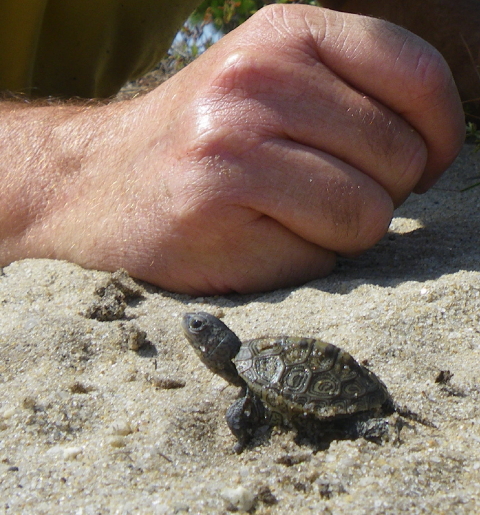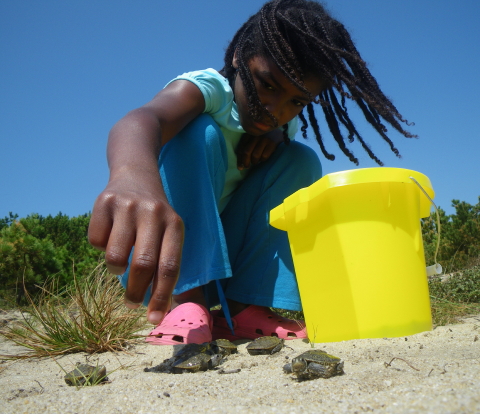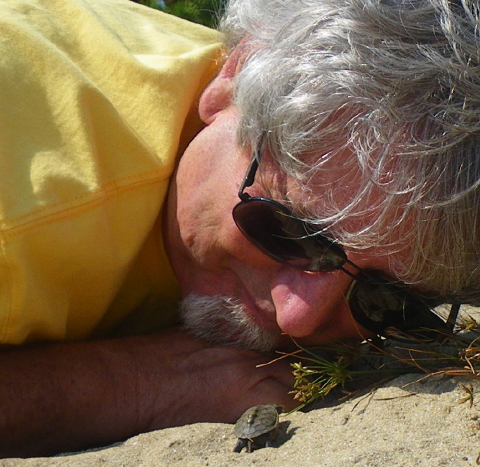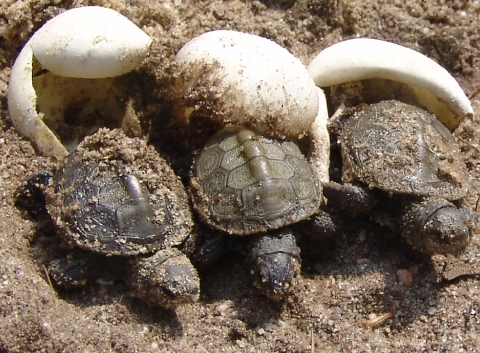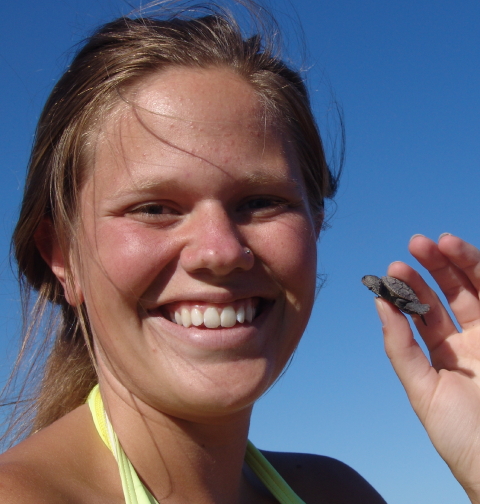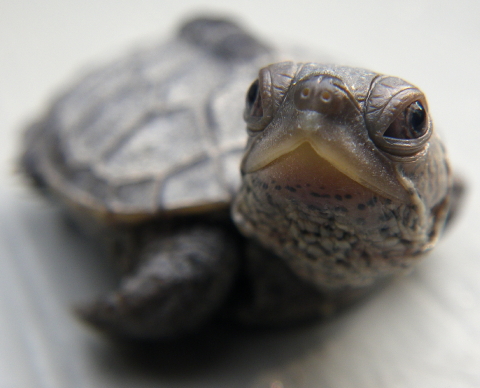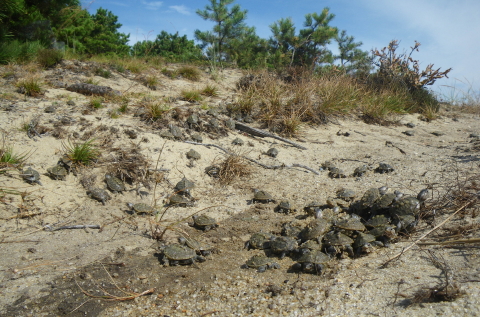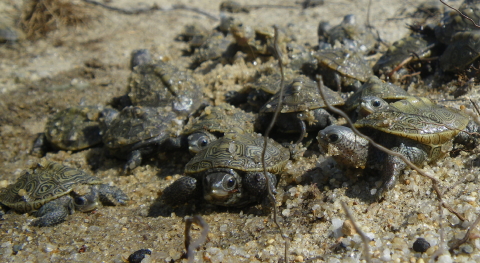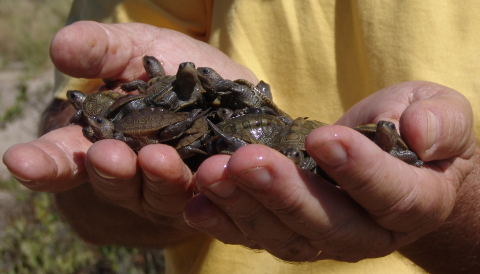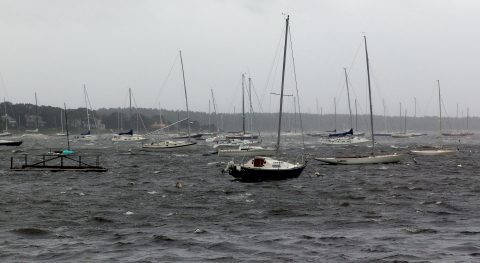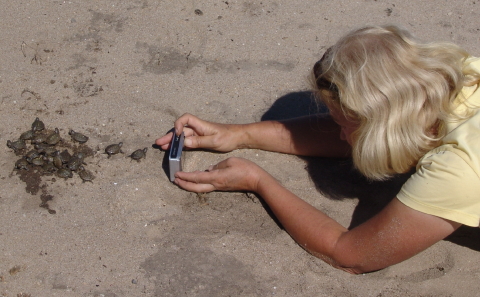Diamondback Terrapin Hatchling @ Turtle Point
The prize of diamondback terrapin conservation is a healthy, growing population of this non-migratory species that had been declining towards extinction for the last century. Achieving that prize means increasing recruits into the adult cadre to stabilize their numbers and then to transform decline into increase. That whole process begins with hatchlings. Saving large numbers of babies bolsters the natural population with lots of new recruits. Turtle Journal and its partners protect nests laid from early June through late July with predator excluder cages to get eggs safely through two to three months of incubation. As hatchlings emerge from these nests, volunteers assist them in making the most dangerous passage of their lives … from nests in sandy beaches, dunes and banks to protective camouflage either in thick lowland salt marsh or in thick upland vegetation.  Highly vulnerable hatchlings simply need a good hiding place for their first winter snooze before they begin foraging in the nursery salt marsh next spring.
Jayla Releases Hatchlings @ Turtle Point
On Saturday, Jayla met up with the Turtle Journal team on Lieutenant Island to learn about threatened turtles. She had an opportunity to release 30 tiny hatchlings that had emerged from nests over the previous 24 hours. As Jayla gently lifted the babies from their pails at Turtle Point, she watched carefully as they scrambled in random directions to find a safe place to hide.
Maire Tries to Photograph the Chaos
Maire, who accompanied Jayla to discover the mystery of Cape Cod’s elusive terrapins, tried as best she could to document the mad scramble of tiny hatchlings crisscrossing Turtle Point in search of a safe spot to hide from hosts of voracious predators.Â
Jayla and Maire Meet Terrapin Hatchling
Before leaving Turtle Point, Jayla and Maire studied one of the hatchlings up close and personal. And like all who bring a hatchling into their hands, they bonded with the little critter, a perfect miniature version of its parents. Unlike mammalian infants, these tiny hatchlings lead independent lives from the moment of their emergence from the nest; their parents’ DNA alone provides everything they need. But also unlike mammals, the chance of a baby’s survival lies somewhere between one in two hundred fifty to one in a thousand.
Don Lewis Eyes Terrapin Hatchling
Yet, under the watchful eye of the Turtle Journal team and its partners on the Outer Cape, odds of survival to adulthood are increased to as high as one in eight, giving this threatened species a substantially improved chance of avoiding extinction.  With aggressive nest conservation begun in 2000, the steady decline in terrapin numbers in Wellfleet Bay slowed, and then stabilized in mid-decade. Within the last few years, the trend fully reversed and the Wellfleet population is now growing once again.
